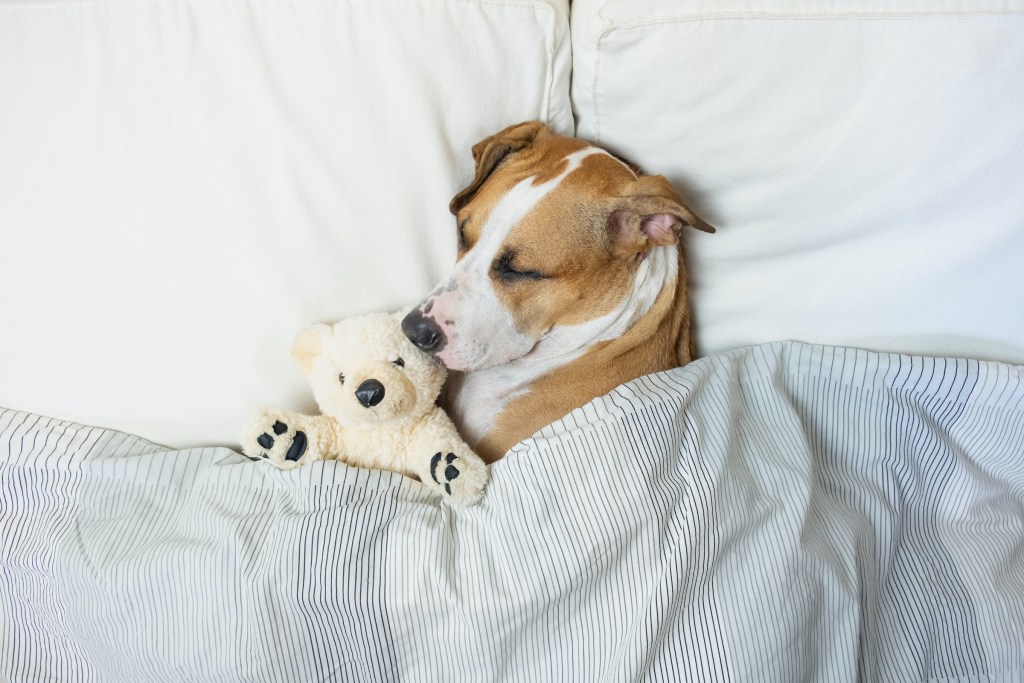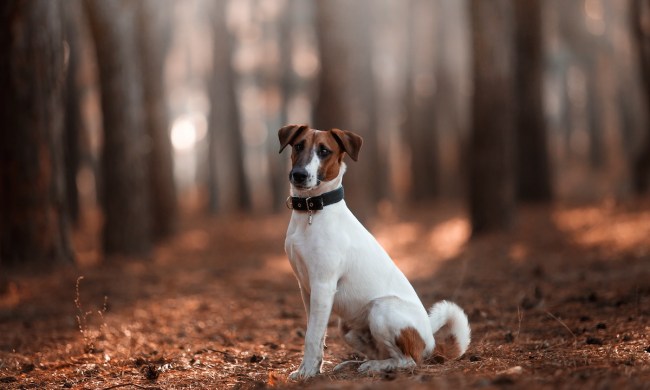Have you ever noticed your pup “running” in their sleep? Their paws may move, they may twitch, whine, or even start barking—all the while being completely asleep. Many pet owners have intuitively guessed that it is a dog’s way of dreaming, but are they right?
Do dogs dream?
Animal researchers have made great progress in understanding mammals’ dream habits, though there is still much to learn. We may not know exactly what’s going through a pup’s mind while they’re catching some Z’s, but we can make some pretty good guesses. Whether or not your dog is an active sleeper, here’s what you may want to know about canine dreams and what causes them:
Do dogs dream?
It may not surprise you at all to learn that dogs can dream, especially if your pup is known for their sleep-running skills. It’s safe to say that an active (asleep) body is a good indicator of an active mind, too.
Just like the brains of people, research rats, and other mammals, dogs’ brains use the sleeping time to process and store information from the previous day. Just like with humans, this tends to happen most vividly during the rapid eye movement (REM) stage of the sleep cycle, notes The American Kennel Club. You may notice your dog’s eyes darting back and forth beneath their eyelids while they’re in REM, or you may see shallow breathing, twitches, or other movements.
Identifying individual sleep stages also made it possible for scientists to study the process of dreaming in many species, using humane, brainwave-reading technology.

What do dogs dream about?
When you see your pup’s twitching paws while they sleep, what do you think they’re dreaming about? Chasing a cat? Playing with a buddy? Could be!
University of British Columbia researcher and professor Dr. Stanley Coren led a 2010 study that examined the brain activity of rats in order to understand their dreams. Experiments found that while dreaming, rats’ brains act identically as if they were completing a task — leading scientists to believe that they are processing the previous day’s activities. “Thus if a rat ran a complex maze during the day,” reads the study, “he might be expected to dream about it at night.”
Coren expanded his studies to include dogs, and he took it one step further. He and his research team carefully disabled the pons — the area of the brainstem responsible for keeping large muscles inactive during sleep — in order to allow dogs to act out their dreams. These experiments confirmed that “dogs dream doggy things,” whether it be hunting, eating, or spending time with their owner.
How often do dogs dream?
Another detail that Coren discovered, though he does not yet know why, is that a dog’s size affects their dreams, too. He noted that smaller dogs have more frequent but shorter dreams, while larger dogs may dream for longer but less often.
Generally speaking, though, a dog will reach REM sleep within about 20 minutes of falling asleep. Dreaming can last for just a few minutes or a bit longer, depending on your dog’s size — so the twitches won’t last long!

Do dogs have nightmares?
If dogs can dream, it makes sense that they can experience nightmares, too. They may not be the same as human nightmares — showing up to class naked or being late for work — but they can be stressful nonetheless.
Your pup may whimper, twitch, or look uncomfy while sleeping through a nightmare. The American Kennel Club explains that, while it may be hard to watch your fur baby experience an unpleasant dream, you should not wake them up. Even gentle touch can be startling for an animal in REM sleep — just think about how disorienting it can be to wake up from an intense dream!
Make sure to let everyone in your family know to let sleeping dogs lie. Your best bet is to be there for them when they wake up in case they still feel scared or anxious — you’ll get to comfort them without risking a reaction.
Final thoughts on dog dreaming
Are you surprised to learn that dogs can dream as people do? Of course, they may not dream about the same things you do, but you have more in common than you think. And since your dog spends at least half of their life sleeping (or at least resting), you’ll have plenty of chances to catch their dreams first-hand. Pay close attention — you never know what you might notice; it could be a clue as to what your sweet pup is dreaming about.



